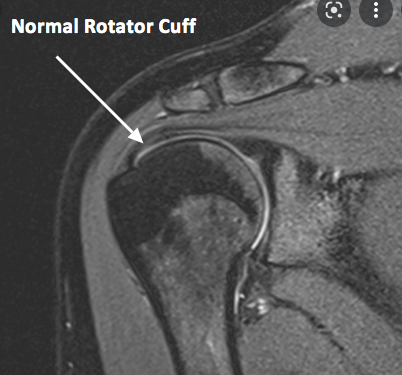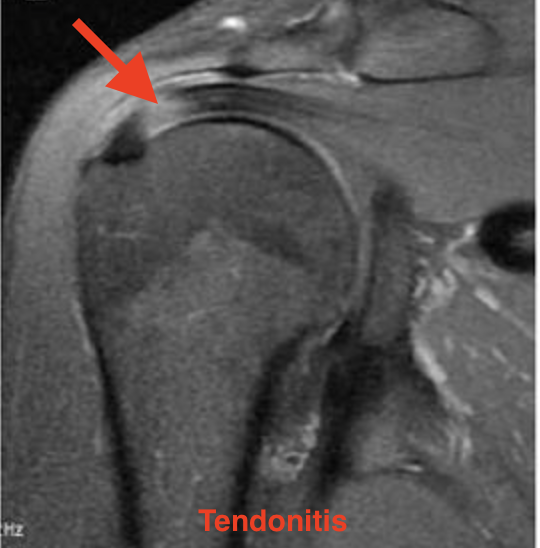Tendonitis
What is Tendonitis?
The rotator cuff is a group of tendons. When these tendons become inflamed it is called Tendonitis (also spelled tendinitis) and/or tendonosis (also spelled tendinosis) (see photos MRI normal, MRI tendonitis). They are both very common. There are some differences between them, but for the most part, they can be considered the same problem.
What causes Tendonitis?
Tendonitis/tendonosis can happen from an injury or from repeated use of the shoulder. The most common cause is shoulder capsulitis. Capsulitis causes the ball of the shoulder to push up against the bony arch on top of the shoulder and pinches the rotator cuff leading to the inflammation of the tendon.
What are the symptoms of Tendonitis?
The symptoms of shoulder tendonitis are very similar to shoulder capsulitis. These include pain in shoulder with use, with motion, and while sleeping. This can be both end-range-of-motion pain (The Crank Test) and mid-range-of-motion pain.
How can you tell if you have Tendonitis?
A physical exam and X-rays are needed. An MRI is useful (see picture). Seeing tendonitis on an MRI is very common. However, it is uncommon for tendonitis to be the main cause of a person’s shoulder pain.
How is Tendonitis treated?
The treatment for shoulder tendonitis is also very similar to capsulitis: most people get better with a special form of therapy rather than surgery. Surgery is rarely needed.
The therapy involves stretching the shoulder to correct the mechanics of the joint. This limits the pressure on the tendons and brings down the inflammation. Usually the therapy program is the 4 quadrant stretching program. Also tendonitis does best when the person continues to use their shoulder. It usually does not get better if the person “babies” their shoulder.

